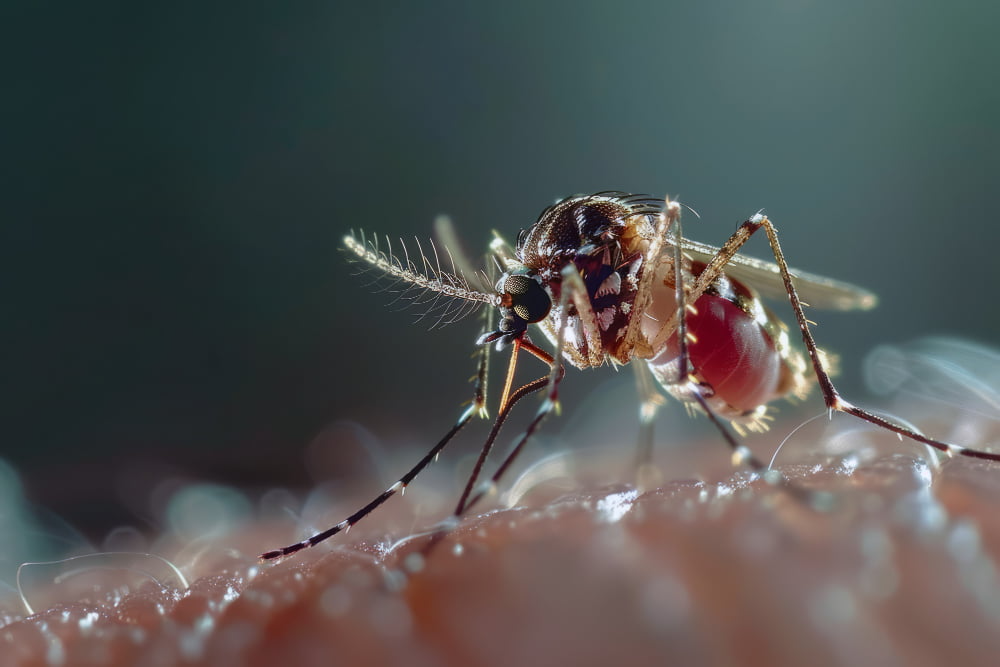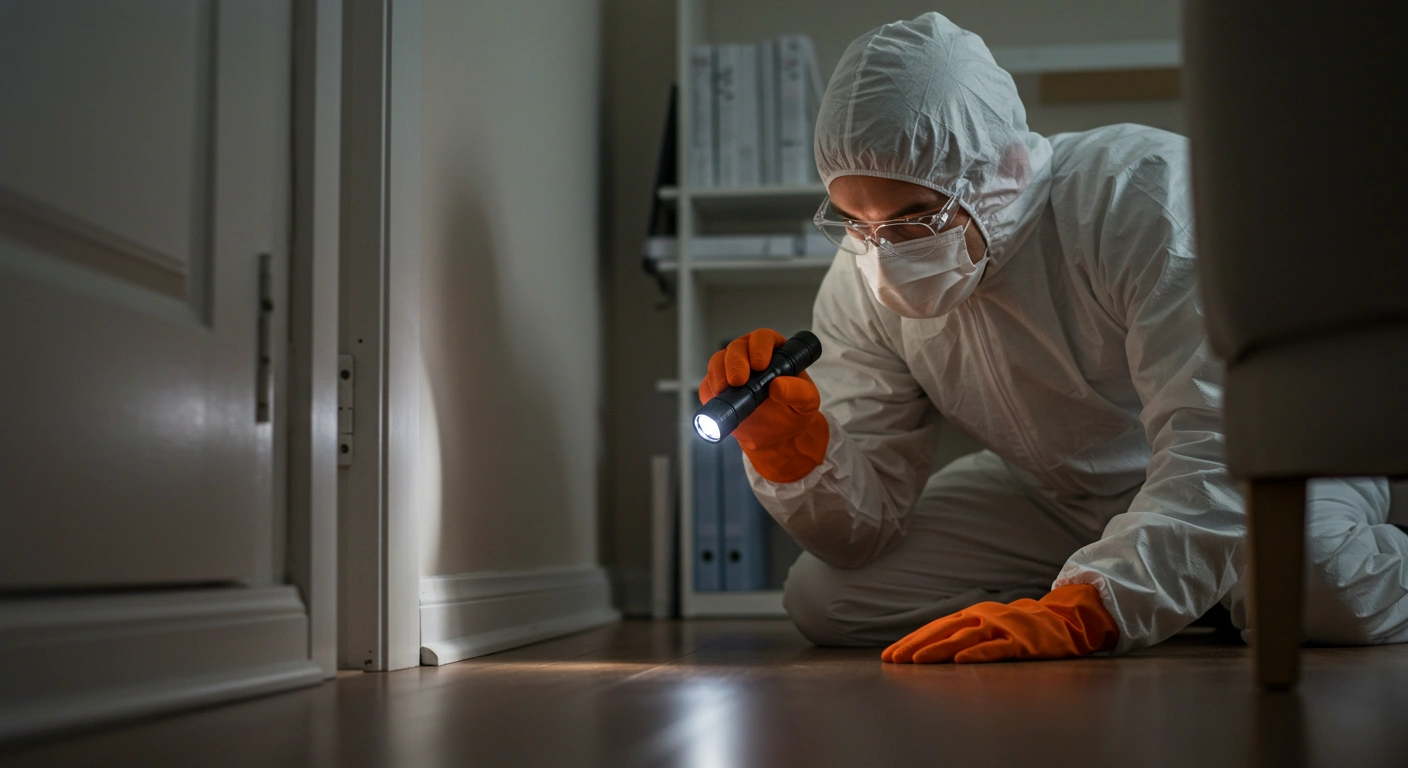Ever watched your dog sniff a corner where ants are marching like an army? Or perhaps you were horrified when your cat started playing with some ridiculous looking insects?
Pest control shouldn’t feel like choosing between keeping pests out and keeping pets safe – that’s an important problem we solve.
Some treatments leave behind odours, residues, or unknown risks – especially when little feet and paws explore every inch. We get how hard it is to find something that works and still feels safe for every member of the family.
Whether you’re running a busy café, managing rental homes, or raising kids and pets under one roof – we’re here to help. At TSD Pest Control, we use safe, proven methods to keep pests out without putting loved ones at risk.
Understanding the Impact of Pests on Pets and Family
Common pests and the risks they pose
Pests don’t just creep and crawl – they bring discomfort and health risks to pets and family members. Fleas, ticks, and mites latch onto pets, hiding in their fur and causing constant itching or worse, blood infections. Cockroaches, ants, and spiders often sneak into food bowls or bedding, spreading bacteria such as salmonella. Rodents are an even bigger concern, known carriers of diseases like leptospirosis – not to mention they can cause chaos chewing through wires or walls.
Effects of pests on pet health
Imagine your dog scratching nonstop or your cat hiding under the bed – pests can spark more than just a reaction. They bring allergic flare-ups, inflamed skin, and painful sores. Parasites like ticks and fleas may carry tapeworms or Lyme disease, transferring them to pets, or even you – without warning. Changes in behaviour like anxiety, restlessness, or decreased appetite often reveal that your pet is distressed by an unseen intruder.
Hidden dangers of conventional pest control methods
Chemical sprays might keep bugs out but can leave pets at risk. Toxic substances settle on beloved chew toys, blankets, or even in feeding areas. Over time, this kind of exposure may cause respiratory issues or upset digestive systems in pets and kids alike. Even after cleanup, invisible residues can linger in corners they sniff or sleep in every day.
Safe and Effective Pest Control Solutions

Natural and organic repellents
There’s a safer way to keep pests away that won’t bother your pet’s health. Some essential oils – like lavender or cedarwood – are safe around cats and dogs when used in the right amounts. Herbal sprays made from ingredients like neem, citronella, or peppermint also work well against pesky bugs. Homemade blends, crafted from vinegar, water, and pet-safe oils, offer a daily shield in food areas and sleeping spots.
Low-impact commercial products
Some commercial items are made with pets in mind – and it shows. Look for sprays that break down fast and gels that don’t leave sticky traps behind for paws to poke. Certified insecticides approved for homes with animals meet high standards for safety. Products marked with relevant Australian certifications indicate they’re tested for non-toxic performance near pets.
Professional pet-safe pest control options
When secure results matter, it’s best to trust local professionals who care about your pet like you do. At TSD Pest Control, we ensure every treatment follows strict pet-safe practices. When hiring a technician, always ask how they protect pet safety, what products they use, and how they minimise non-target exposure. Our lead technician explains each step clearly so families know what’s happening and why it matters.
Preventing Pests in Pet-Friendly Homes
Seal and block pest entryways
Stopping pests before they sneak in is half the battle. Small gaps near vents or under doors become a welcome mat for insects and rodents. Using mesh screens for windows and drains adds an instant layer of protection. We often recommend installing door sweeps and caulking frames to keep invaders out without relying on chemical barriers.
Maintaining pet hygiene and home cleanliness
A tidy space keeps pests guessing – they can’t nest where there’s no mess. Leave no loose pet food behind after meals and refresh water bowls daily to avoid attracting ants or cockroaches. Grooming pets regularly not only protects them from parasites but also helps detect early warnings. Clean their bedding, loungers, and toys weekly so bugs don’t find comfort where your pet does.
Approaches for indoor and outdoor pest control
Yard control is key, especially for pets that love to play outside. We use pet-safe yard treatments that repel without harming paws or fur. Inside, we suggest using insect traps in hidden corners and barriers near sinks or baseboards. We prefer safe repellents like diatomaceous earth in play zones – harmless to pets but harsh on bugs.
Adopting Long-Term, Pet-Friendly Pest Prevention Strategies

Setting up a preventative routine
Prevention isn’t once-off – it’s a habit. Seasonal checks help identify when pests are most likely to enter and what to look for. Creating a pest-free zone, where pets eat and sleep, limits exposure. Our IPM plans involve combining multiple eco strategies for long-term control – using less chemicals, more logic.
Monitoring and adapting home environments
Sometimes, it’s the smallest change that makes the biggest difference. Leaving pet food out overnight or skipping bin runs may invite pests. Watch for droppings, chew marks, or unusual pet behaviour as early signs of intrusion. Make slight home shifts during breeding seasons – like closing dog flaps overnight or trimming garden overgrowth.
DIY prevention methods for pet parents
Your cupboard may already hold the next pest solution. Homemade traps using sugar and baking soda work against ants, while citrus peels can deter spiders. A quick vinegar spray around doors and bins keeps bugs at bay. Controlling indoor airflow and dehumidifying rooms cuts down on environments that pests love.
Choosing Safe Products and Reading Labels Effectively
Essential features of pet-safe products
Labels can be tricky, but knowing what matters makes things easier. Choose biodegradable products that don’t linger long on surfaces your pets touch. Phrases such as “pet-safe” or “non-toxic to animals” should be listed clearly. Look for Australian certifications – they show the product has passed strict testing standards for pet and environmental safety.
Understanding chemical contents
Reading an ingredients list can feel like decoding a puzzle. Avoid harsh chemicals like organophosphates or pyrethroids, which are dangerous even in small amounts. Beware of false advertising where “green” means little – some labels use the term without substance. Always compare reputable items with homemade alternatives to weigh value, safety, and application method.
Helpful product recommendations and reviews
We rely on trusted brands that align with our safety-first approach. Focus on items suited for the pests you’re targeting – there’s often a safer flea spray than a general bug bomb. Our go-to solutions vary by home, but reviews and performance from local clients guide our pet-safe preferences.
Special Considerations for Different Household Pets

Tailoring pest control to pet species
Pets come in all shapes, sizes, and sensitivities. Cats and dogs may get into everything, but birds and reptiles react quickly to airborne chemicals. Fish tanks should always be covered tightly any time sprays are used nearby. Rabbits and guinea pigs, with their low-to-ground habits, need extra care during treatment days.
Outdoor pest dangers for garden pets
Backyards can be a pest playground, especially with pets who roam in gardens. Use repel fences made from pet-safe materials to keep foxes or snails away. Avoid common hazard items like pellets, snail bait, and strong weed sprays – pets may consume them accidentally. We suggest using natural plant barriers instead for safe and gentle protection.
Best Practices During and After Treatment
Before pest treatment
Preparation is key to keeping everyone safe. Always remove your pet’s bowls, bedding, and favourite toys before treatment begins. Consider placing pets in a secure room or at a neighbour’s for a few hours. Let each family member know what’s being applied and when it’s safe to return to normal routines.
During the treatment process
While our treatments are safe, pets should still be kept clear of active sites. Curious noses or paws shouldn’t be near areas with bait or residue. Watch for changes in behaviour – sneezing, fatigue, or itching might indicate mild exposure. Our technician, Trae, always communicates in real time to help you respond if needed.
Post-treatment care and re-entry guidelines
Once treatments are done, a quick clean-up makes re-entry safe. Wipe food surfaces, mop floors near exposed areas, and wash pet items if near treatment zones. Wait for surfaces to dry before allowing pets back into those spaces. Keep observing their habits – if anything unusual pops up, check in with us or your vet.
Educating Pet Owners on Responsible Pest Control
Raising awareness at home
Kids and adults alike play a role in pest prevention. Teach youngsters not to share food with pets near floors, and always store snacks properly. Encourage everyone to report insect sightings – the sooner we know, the less we use. Strong communication keeps risks low and comfort high for all members of the home.
Partnering with your vet and pest expert
If your vet knows your pet’s specific sensitivities and can advise before any treatment. We often work directly with vets to design tailor-fit solutions. If pets show allergic signs or strange symptoms post-treatment, reach out quickly for help. Ask our team about long-term prevention tips suited for your home and breed.
Peace of Mind Shouldn't Come with a Price Tag of Worry
Your home shouldn’t feel like a battlefield where you’re constantly choosing between safety and effectiveness. We’ve all stood in that hallway, holding a spray bottle, wondering if it’s worth the risk around our pets and kids. You shouldn’t have to second-guess your family’s safety while trying to solve a simple pest issue.
The right solution keeps your loved ones protected without compromise. Look for treatments that are both safe and proven to work – because peace of mind is worth more than a quick fix. It’s absolutely possible to keep pests out without letting harmful chemicals in.
At TSD Pest Control, we put your peace of mind first with treatments that protect your entire family – including the ones with paws. Reach out today and let us help you restore comfort and safety to your space.
Frequently Asked Questions
Yes. At TSD Pest Control, we use certified botanical treatments and targeted applications to make sure they're safe for all family members during and after treatment.
This depends on the solution used. For most of our eco treatments, it's safe after surfaces have dried - usually around 2 to 4 hours.
They work well when used regularly and in the right spots. For serious infestations, we still recommend trusted professional solutions.
Look for non-toxic gels, botanical sprays, and diatomaceous earth. These remain effective while keeping your furry mates safe.
Yes, for mild activity. Regular cleaning, natural repellents, and early detection can hold off problems, but we’re here for anything stubborn or recurring.






